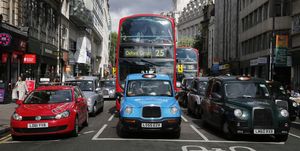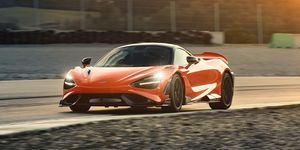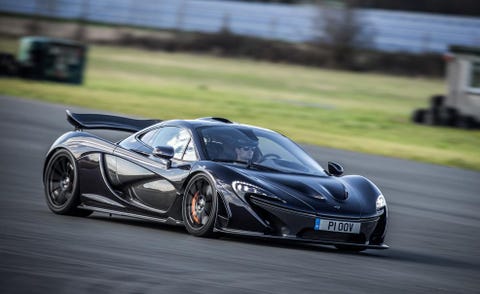- According to CEO Mike Flewitt, McLaren’s use of internal-combustion engines is likely to continue beyond the British government’s proposed ban on their sale after 2035.
- Work is underway on a P1 replacement—which is set to be a hybrid, not an EV.
- The specialty carmaker says it has no plans to move beyond supercars, unlike most luxury rivals.
The British government’s proposal to pull forward a ban on the sale of gasoline and diesel powerplants from 2040 to 2035 has raised some serious questions for the U.K.’s luxury automakers, especially as many of them are about to move into hybrid powerplants, which also face the ax.
“It was a surprise, and not a particularly nice one,” McLaren CEO Mike Flewitt told Car and Driver when we spoke to him by telephone earlier this week, in lieu of the interview we were meant to carry out at the canceled Geneva auto show. “Moving to 2035 is aggressive, including hybrids obviously much more so. I see it as a vision by the government. There’s no plan underpinning it in terms of infrastructure or technology at this stage.”
McLaren is going to join with other automakers in lobbying for hybrids to be excluded, but Flewitt also acknowledged that McLaren’s global sales mean it will almost certainly still be working on cars using at least some form of combustion power, even if these have been banned in Britain 15 years from now.
“I’ve always thought that EV rollout would see different market segments responding at different speeds. It does suit small commuter cars pretty well,” he said, “with other sectors like ours responding a little later. I also think there will be geographic differences, with some markets like China pushing aggressively and other markets having a more relaxed time frame. Add all that together, and you’ve got a mixed powertrain strategy for the next 20 or 30 years.”
McLaren is already committed to hybridizing almost its entire lineup, but with electrical power playing a relatively limited role. Moving beyond that to bigger battery packs would produce some major packaging headaches. “As a lower-volume manufacturer, our strategy is built around one platform,” he said, “so we might need an EV platform for certain markets and a hybrid platform for other markets or sectors.”
The wait for a pure electric McLaren looks set to be long, despite the development of megafast EV hypercars like the Lotus Evija. Flewitt confirms that the next vehicle McLaren will develop in its range-topping Ultimate Series after the Elva roadster will be the long-awaited replacement for the P1, due around 2024. “We haven’t announced the powertrain for that. Obviously, looking forward, it will either be hybridized or EV,” he said.
Which sounded like the door is still open, until he went on: “I like EVs, I’ve driven them quite a lot lately, and for regular use they are responsive, refined, and have incredible performance,” Flewitt said. “But the charging times are really restrictive. Take the 765LT as an example: we know a lot of customers are going to take that to the track. If it was an EV, you’d be looking at maybe 30 minutes of running time and then plug it in until the next day. That’s not a persuasive position.”
He continued by acknowledging, “I’m going to sound like I’m being flippant here, but go and buy a drag racer, and that will do a pretty incredible quarter-mile time and then run out of fuel.
“We don’t build cars like that, pure zero-to-200 or zero-to-300 or even top speed. It’s not the purpose of the car’ it’s a consequence of the attributes we’ve designed into it. They’re incredible, the Evija, that Pininfarina with 2000 horsepower. But how long do you think you could drive them flat out?”
Flewitt also said he sees a rosy medium-term future for more traditional supercars, saying that the early reception for the 765LT—which was meant to be revealed at Geneva—has been overwhelmingly positive. The company has opted to switch back to limiting production numbers rather than limiting production time, a strategy Flewitt admitted “didn’t resonate as strongly in the market as when we’ve defined a volume.” Which is why the new car will be limited, and each one will carry a number.
What about other brave new directions? Flewitt has gone on the record several times to say that McLaren won’t follow the herd and make an SUV, but what about anything that isn’t a traditional two-door, two-seat supercar?
“I think that’s still a no,” he said. “I think at the kind of numbers we have right now—4500 to 5000 cars a year globally—that’s a good volume. And as long as we’re staying true to our core, which is supercars, there is going to be good global demand for that.
“We can be consistent with the brand, get good returns, invest in new technology, and move it forward. That’s not to say that at some point we wouldn’t want to grow the brand, take some of our technical strengths into other areas—but there are no plans currently.”
Source: Motor - aranddriver.com







